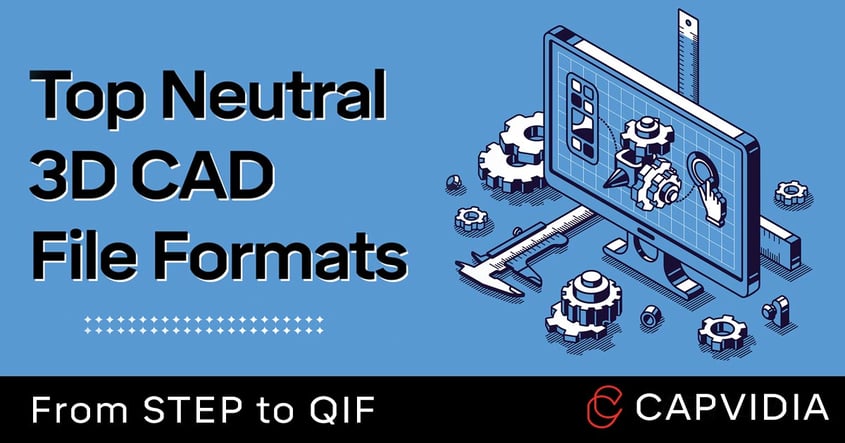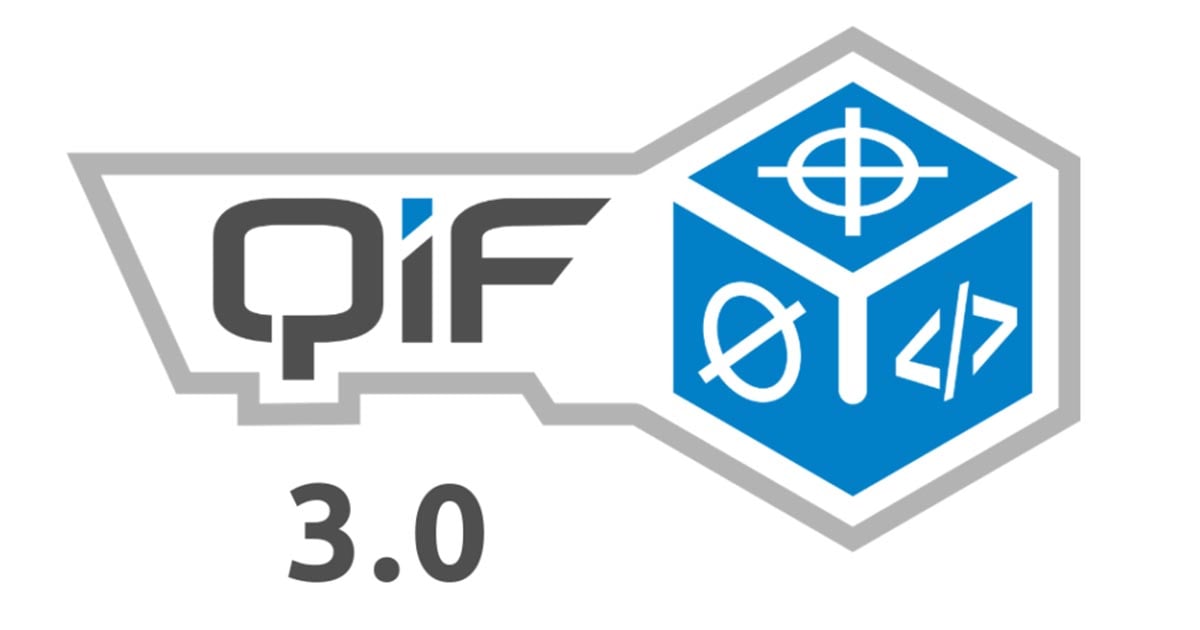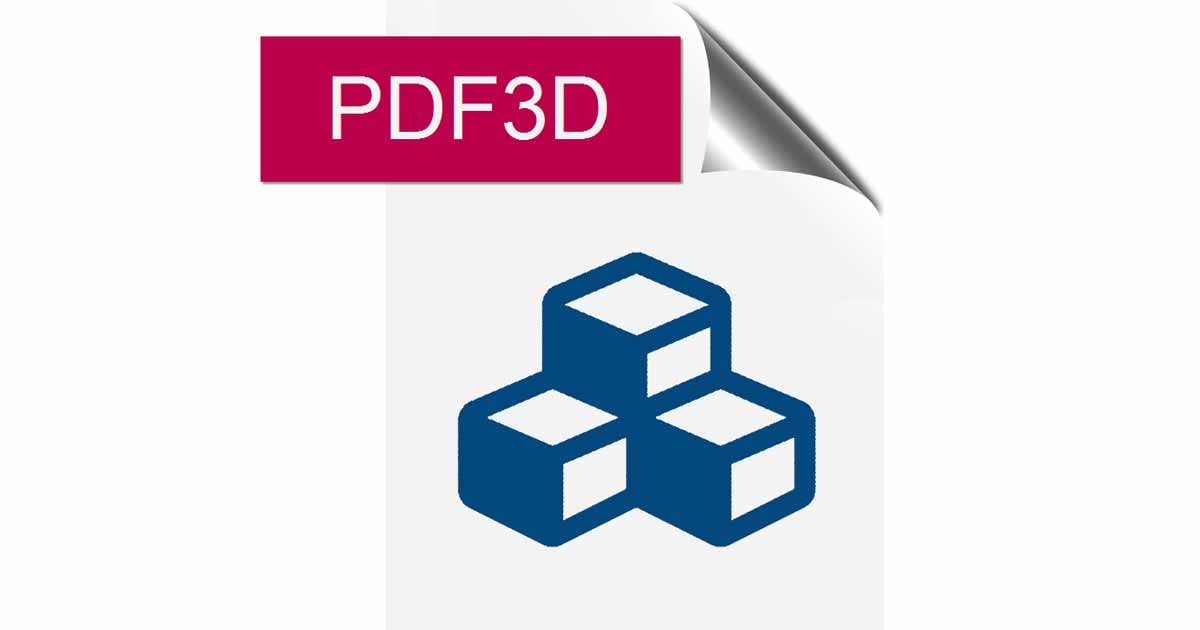What Are Most Common Drawing File Types?
CAD (reckoner-aided pattern) files are digital files that house 3D & 2D designs likewise as information regarding materials, processes, tolerances, and other data. From design to production, everything begins with the CAD file. However, think of the various stakeholders that eventually handle the file: All utilize different CAD software, making interchange difficult for all– especially when geometric information and 3D annotations such as PMI (production manufacturing information) must maintain integrity. Native CAD file formats from PTC Creo, Siemens NX, CATIA, SolidWorks, Autodesk Inventor, and others are proprietary and need to be translated & validated for downstream processing. Due northeutral CAD file formats, however, are interoperable betwixt different CAD software. Today we await at the all-time 8 neutral CAD file formats, especially pertaining to mechanical CAD conversion. Capvidia is a business firm believer in CAD formats that are standards (e.g. ISO, ANSI, etc. that ensure quality and consistency) and that are model-based definition (MBD) ready. MBD CAD files include both the geometry and product manufacturing & quality requirements, which are ordinarily done on 2D drawings. By combining second drawing data into the 3D CAD model, it becomes the administrative source for a product'due south lifecycle. This enables automation, data insights, and connectivity from pattern to manufacturing from a unmarried source of truth that is both human and machine readable. Information technology's CAD in the historic period of IoT connectivity and smart data. Capvidia is a leader in CAD translation & validation, especially pertaining to digital transformation and the MBD journey. Have questions? Talk to our team today. MBD CAD Files: Not-MBD CAD Files: Pace files are the nigh widely used & accepted neutral CAD format today, therefore, making it a standard across multiple industries. Most CAD software supports importing & exporting Stride files, allowing information technology to be interoperable between unlike systems including CAM (computer-aided manufacturing), CAI (computer-aided inspection), and CAE (computer-aided engineering). In regards to mechanical CAD in that location are 3 major STEP file formats: However, both Step AP203 and Stride AP214 have deprecated in favor of STEP AP242. PROS: CONS: QIF (Quality Data Framework) files are made for the digital manufacturing in the 21st century. Information technology optimizes for semantic PMI which allows for human & machine-readable CAD leading to two main things: interoperability & traceability downstream. Although the newest format on this list, its gained the more attending as more than OEMs need a robust file format to exchange information downstream from blueprint to manufacturing to quality. PROS: CONS: JT (Jupiter Tessellation) files are the nigh confusing of the neutral CAD format grouping. Although known for vis-rep, it can also accept total B-rep and PMI, therefore making it MBD-ready. Information technology's internal B-rep representation is flexible, including back up for ISO 10303 (Step) and Parasolid. If a JT exported from NX contains B-rep information, it will be in the Parasolid format. Although JT is technically an open format, many vendors use Siemen'due south JT Open Toolkit. This toolkit is particularly important if dealing with Parasolid data, which makes employ of blends with proprietary recipes. Considering of this, information technology isn't quite widely accepted equally STEP or QIF. PROS: CONS: 3D PDF files are popular for a reason. It's a ubiquitous format, hands viewed on computers, smartphones, and tablets. Specially convenient for those who don't accept CAD systems or viewers. PROS: CONS: STL files are universal 3D formats that focuses on surface geometry and shapes but not for colors, textures, or other model attributes, which is good for rapid prototyping, 3D printing, and some CAM software. Withal, it uses triangulated mesh surface which is acceptable for visual representation, simply non workable in CAD systems since near work in solids. When complicated CAD is not required, STL files are acceptable in nigh basic situations. PROS: CONS: IGES files were the first neutral CAD file invented and deployed in the late 1970s/early 1980s. Although an older standard technologically superseded past Step & QIF, information technology's still used today since information technology's been effectually for a long time and is very widely supported. More often than not used for surface geometry (although it can support solid models) and design work. Can ofttimes get translated with gaps between surfaces, missing faces, and fifty-fifty surfaces with wrong orientation. So information technology's recommended to go with Pace or QIF or take a tool for repairing bad geometry and stitching surfaces. PROS: CONS: ACIS files are 3D solid and surface CAD files from Spatial, a Dassault Systemes sectionalisation. Information technology is a geometric modeling kernel compiled in C++ and used in CAD, CAM, CAE, and CMM. PROS: CONS: Parasolid files are used past the geometric modeling kernel currently owned by Siemens and used in CAD, CAD exchange, CAM, CAE, and production visualization. Licensed and used in over 350+ applications such as NX, SolidWorks, SolidEdge, MasterCAM, Onshape, and others. Can correspond wireframe, surface, solid, and general non-manifold models. Virtually Parasolid files migrate 3D solids and/or surface data. PROS: CONS: Capvidia is a leader in CAD translation & validation, especially pertaining to digital transformation and the MBD journey. Take questions? Talk to the expects today.

Have Questions Most Neutral CAD Files?

Table of Contents:
1. Step (File Extension: *.STEP, *.STP)
two. QIF (File Extension: *.QIF)

3. JT (File Extension: *.JT)
4. 3D PDF (File Extension: *.PDF)

5. Stereolithography Files (File Extension: *.STL)
six. IGES (File Extension: *.IGS, *.IGES)
7. ACIS (File Extension: *.Sabbatum)
8. PARASOLID (File Extension: *.X_T)
Have questions most neutral CAD formats? Ask away, nosotros'll exist happy to help.

← Back to news list
Source: https://www.capvidia.com/blog/top-neutral-3d-cad-file-formats
Posted by: coxduccies.blogspot.com


0 Response to "What Are Most Common Drawing File Types?"
Post a Comment